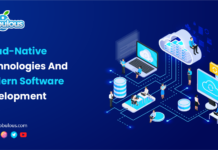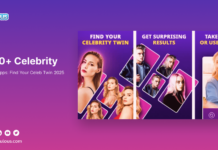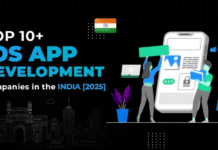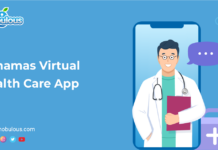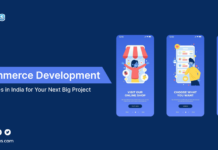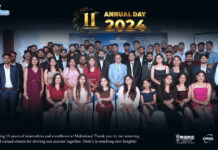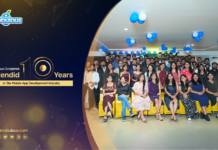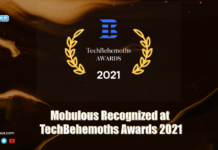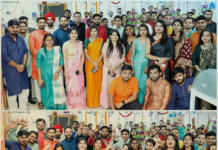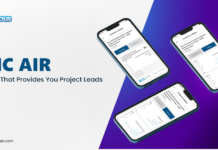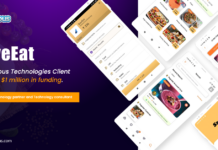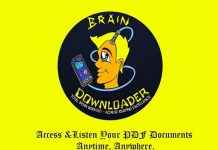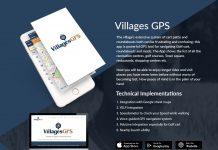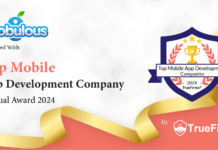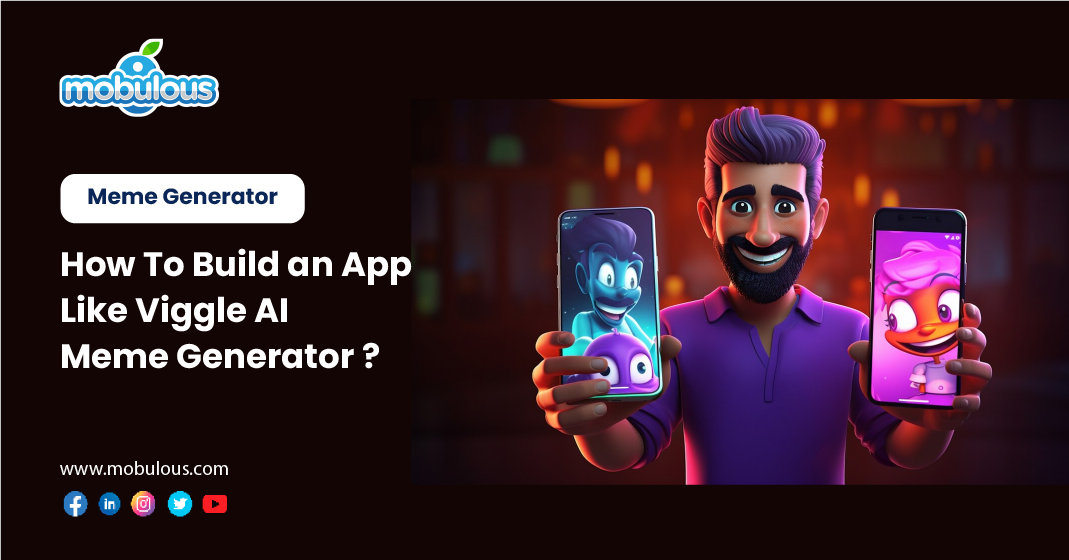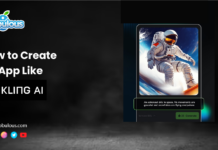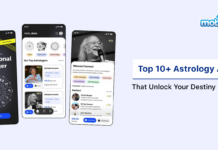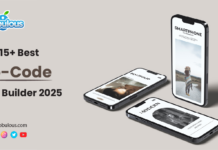How To Build an App Like Viggle AI Meme Generator?
Viggle AI meme generator took the internet by storm as it revolutionized how users create out-of-the-box and hilarious memes with AI-powered character movements.
This viral sensation enables users to bring static images to life simply by transforming simple pictures into entertaining and shareable content that captures immediate attention across social media platforms like Facebook, Instagram, Threads, and Twitter.
If you are looking to create a meme-generating app powered by Artificial Intelligence, this blog will provide you with a comprehensive breakdown of the development process, essential features, and the right technology stack. So, tighten your seatbelt and get ready to take a long drive into Viggle AI meme generator app development!
For Query:- Seek Help From the Best Mobile App Development Company!
What is Viggle AI, and Why is it so Popular?
Viggle AI is an innovative mobile app that uses advanced Artificial Intelligence in order to animate static images, allowing users to create memes where characters move, dance, or interact in unexpected ways.
Its popularity stems from its creative potential, user-friendly interface, and the ability to generate instantly shareable and humorous content.
By transforming ordinary images into dynamic, entertaining videos, Viggle AI has caught the vision of social media users worldwide, making meme development more accessible and fun than ever before.
For Query:- Seek Help From an AI/ML App Development Company!
Planning Your App Like Viggle AI Meme Generator
Before jumping into Viggle AI meme generator app development, it is important to plan for it strategically to create a robust app that can potentially rival Viggle AI’s innovative approach. In order to plan for it, you need to identify the target audience, choose the right niche (education, political, entertainment, historical, etc), and define the core functionalities.
1. Identifying The Target Audience
Understanding your target audience is the foundation of a successful meme generator app. Focus on demographic research, examining the age groups most active on social media, meme-sharing communities, and content creation platforms.
Make sure to consider factors such as digital humor preferences, tech-savviness, and platform engagement patterns in order to design an application that resonates perfectly with users and meets their creative and entertainment requirements.
2. Choosing The Right Niche
Choosing a specific niche (political, educational, scientific, entertainment, etc) within the meme generation market can differentiate your app from competitors. Explore exceptional angles like genre-specific memes creation for brands or specialized animation techniques. Make sure to follow the app development trends as well.
Consider targeting underserved communities, enforcing novel AI technologies, or creating more advanced movement algorithms that provide users with unparalleled creative control and entertainment value.
3. Defining The Core Functionalities
Core functionalities are the heart of your meme generator app. Prioritize immersive AI-powered image animation, diverse movement templates, smooth upload mechanisms, and robust editing tools.
Enforce machine learning algorithms for seamless character tracking, seamless sharing options, multiple animation styles, and top-quality video generation. Ensure the user experience is engaging, smooth, and provides multiple creative possibilities for meme lovers.
How to Create an App Like Viggle AI Meme Generator?
In order to create an AI-powered meme generator like Viggle AI, you need to plan the steps very carefully. Additionally, you’ll need to have technical expertise and a deep understanding of user expectations in the dynamic world of digital content creation. Below is the step-by-step process for creating a robust app like Viggle AI Mod APK:
Step 1: Market Research & Competitor Analysis
Conducting thorough market research is essential for understanding the meme generation landscape. Examine existing platforms like Viggle AI, TikTok, and other viral meme creation tools.
Investigate user reviews, pain points, and feature sets of current apps. Identify gaps in the market, potential unique selling propositions, and AI-powered content creation.
Analyze user engagement metrics, social media traction, and download statistics to inform your app’s strategic development and differentiation.
Step 2: Choosing the Best App Development Approach
Choosing the optimal app development methodology is essential for the success of your AI meme generator app. Assess options between native app development (iOS/Android), hybrid solutions, and cross-platform app development frameworks (Flutter/React Native).
Make sure to consider factors such as app development costs, target audience device preferences, performance requirements, and long-term scalability.
Evaluate the pros and cons of each methodology, factoring in your team’s technical expertise, specific AI-powered features, and budget constraints you plan to enforce.
Also Read:- Native vs. Hybrid vs. Web Apps: Best Mobile App Approach?
No Code vs Custom App Development — The Basic Difference
Understanding the nuanced differences between no-code and custom app development is essential for entrepreneurs and app developers seeking the most effective approach for their project. The table below will help you understand this in a proper manner:
| Aspect | No-Code Development | Custom App Development |
| 1. Development Speed | 1. Offers rapid development with pre-built templates and drag-and-drop interfaces, allowing quick prototype creation and minimal technical expertise.
2. Ideal for entrepreneurs wanting to validate ideas quickly without extensive coding knowledge or time-consuming development processes. |
1. Requires significant time investment with manual coding, architectural design, and detailed implementation.
2. Provides complete control over the development timeline, allowing for more complex and nuanced feature development. |
| 2. Cost Implications | 1. Lower initial investment with minimal upfront development costs.
2. Subscription-based pricing models make it accessible for startups and small businesses. 3. Reduces the need for extensive technical hiring and provides a cost-effective solution for basic application requirements. |
1. Higher initial investment requires skilled developers, specialized talent, and comprehensive resource allocation.
2. Offers long-term cost efficiency through optimized performance, scalability, and customized solution design. |
| 3. Technical Flexibility | 1. Limited customization options are constrained by platform capabilities.
2. Provides standardized features and pre-built components with minimal modification potential. 3. Suitable for straightforward applications with standard functionality requirements. |
1. Unlimited technical flexibility allows complete customization of every application aspect.
2. Enables implementation of complex algorithms, unique features, and highly specialized functionality tailored to specific business needs. |
| 4. Performance Optimization | 1. Generic performance characteristics with standardized infrastructure.
2. Limited optimization capabilities and potential scalability constraints. 3. Performance depends on platform capabilities and may not meet advanced computational requirements. |
1. Precise performance optimization through custom-coded solutions.
2. Ability to fine-tune every aspect of application architecture, implement efficient algorithms, and create lightweight, high-performance applications. |
| 5. Scalability | 1. Basic scalability with platform-defined limitations.
2. Offers predefined scaling options that might become restrictive as application complexity increases. 3. Suitable for small to medium-scale applications with predictable growth patterns. |
1. Unlimited scalability through custom-designed architectural patterns.
2. Enables horizontal and vertical scaling strategies, adaptive infrastructure design, and seamless expansion of application capabilities. |
| 6. Security Considerations | 1. Standardized security measures are provided by the platform.
2. Limited customization of security protocols and potential vulnerabilities due to shared infrastructure. 3. Relies on the platform’s built-in security mechanisms with minimal additional configuration. |
1. Comprehensive, multilayered security implementation with granular control over authentication, encryption, and data protection mechanisms.
2. Allows creation of custom security protocols tailored to specific compliance requirements. |
| 7. Integration Capabilities | 1. Limited integration options through pre-built connectors and standard APIs.
2. Restricted ability to implement complex third-party integrations or create custom middleware solutions. 3. Suitable for applications with straightforward integration requirements. |
1. Unlimited integration potential through custom API development, sophisticated middleware creation, and advanced data exchange mechanisms.
2. Enables seamless connection with diverse external systems and platforms. |
| 8. Maintenance Requirements | 1. Minimal maintenance overhead with platform-managed updates and infrastructure management.
2. Reduces technical complexity and eliminates the need for extensive maintenance teams. 3. Provides consistent updates and platform-level support. |
1. Continuous maintenance requires dedicated technical teams, regular updates, and proactive performance monitoring.
2. Offers complete control over maintenance strategies and allows rapid implementation of improvements. |
| 9. Learning Curve | 1. Extremely low entry barrier with intuitive interfaces and minimal technical knowledge required.
2. Enables non-technical users to create functional applications quickly without extensive programming skills. |
1. Steep learning curve requiring advanced programming knowledge, architectural understanding, and continuous skill development.
2. Demands significant technical expertise and ongoing learning investment. |
| 10. Long-Term Adaptability | 1. Limited long-term adaptability with platform-defined constraints.
2. Potential challenges in evolving an application beyond the initial design and difficulty in migrating to alternative platforms. |
1. Maximum long-term adaptability through modular design, future-proof architecture, and the ability to continuously evolve application infrastructure and capabilities as business requirements change. |
Step 3: Designing the User Interface (UI/UX)
Develop an engaging and intuitive user interface that streamlines the meme generation process. Focus on clean and modern design principles with seamless navigation and clear user flows.
Build prototypes and wireframes that display smooth image upload, seamless editing capabilities, and AI-powered animation selection. Prioritize user experience by enforcing intuitive controls, quick sharing options, and preview mechanisms.
Conduct user testing to refine interface components, ensuring the app feels both accessible and powerful to meme creators of all skill levels.
Step 4: Developing the AI Model for Memes
Building a robust AI model is the core of your meme generation app. Leverage machine learning techniques like computer vision and generative adversarial networks (GANs) to develop complex image animation capabilities.
Build algorithms that can accurately track and animate character movements, provide diverse animation styles, and generate seamless transitions.
Invest in training data collection, continuous improvement mechanisms, and model optimization in order to improve the AI’s creativity and performance.
Step 5: Backend & Frontend Development
Enforce a scalable backend infrastructure capable of handling advanced AI processing nd user interactions. Select robust technologies like Python, Node.js, or Kotlin for backend development that ensure high performance and reliability.
Design effective APIs for AI model interactions, content management, and user authentication. Build a responsive frontend using modern frameworks like Flutter and React Native that creates a seamless cross-platform experience.
Implement secure data storage, optimized rendering for smooth meme creation and sharing, and effective caching mechanisms.
Step 6: Testing & Debugging the App
Conduct comprehensive testing across multiple dimensions in order to ensure app performance and app reliability. Perform unit testing for individual components, comprehensive testing of the entire meme generation workflow, and integration testing for AI model interactions.
Enforce meticulous error handling, test across various platforms and devices, and validate AI animation accuracy. Leverage automated testing tools and manual verification in order to identify and fix potential issues, user experience inconsistencies, and performance bottlenecks.
Step 7: Launch & Deployment of the App
After all the processes have been completed, plan your app’s launch strategically across major platforms like the Google Play Store and the Apple App Store. Prepare engaging app store listings with captivating screenshots, highlight exceptional AI-powered features, and clear descriptions.
Create a marketing strategy by using social media, targeted advertising, and influencer partnerships. Enforce analytics tools in order to track user acquisition, feedback, and engagement.
Plan for consistent and continuous updates, responsive customer support, and feature enhancements in order to create a reliable user base and iterate on your meme generation application like Viggle AI.
Essential Features for an App Like Viggle AI Meme Generator App Development
Creating a competitive meme generation app requires ingenious features that leverage AI technology, seamless social media integration, and user creativity in order to stand out in the digital content market. Below are the advanced features that your Viggle AI-like app should surely contain:
1. AI-Powered Meme Generation
Advanced machine learning algorithms allow automatic character animation and movement detection. The AI examines input images, generates seamless and dynamic movements, and identifies key points for animation.
Enforce deep learning models that can transform static images into entertaining and lifelike animations with minimal user input, thus developing robust, engaging, and highly unique meme content.
2. Customizable Templates
Provide a vast library of pre-designed meme templates that caters to different humor styles and trending formats. Enable users to tailor background, animation styles, and text placement.
Enforce drag-and-drop interfaces for seamless template modification, supporting both novice users and pro meme creators with immersive design tools.
3. AI-Generated Text and Auto-Captioning
Build savvy text generation algorithms that create contextually relevant and humorous captions. Leverage natural language processing in order to examine image content and suggest witty and trend-appropriate text.
Enforce auto-captioning features that can generate multiple caption alternatives, thus enabling users to select or refine the most entertaining variations.
4. Image Editing Tools
Develop advanced image editing capabilities with AI-powered improvements. Offer tools for cropping, adjusting brightness, contrast, and filtering, and adding effects or stickers.
Enforce smart background removal, image optimization features, and object detection that make meme creation more enjoyable and accessible for users globally.
5. Social Media Integration
Integrate with major social media platforms like Facebook and Instagram seamlessly for quick sharing and content distribution. Build one-click sharing options for Instagram, Facebook, Twitter, TikTok, etc.
Enforceresolution optimization and automatic formatting in order to ensure memes look perfect across diverse social media platforms and maximize user engagement.
6. Text-to-Meme Feature
Enforce an ingenious AI-powered text-to-meme conversion tool that transforms user-written text into visual meme content.
Leverage generative AI to create contextually appropriate images, animations, and characters from text inputs. Allow users to turn their thoughts and jokes into fully realized meme experiences.
7. Meme Trends and Suggestions
Create a savvy recommendation system that tracks current meme trends and suggests popular formats. Enforce machine learning algorithms in order to examine user preferences, viral content, and real-time social media trends.
Provide personalized meme suggestions and highlight trending templates in order to keep users engaged.
8. User Profiles and Meme Collections
Build personalized user profiles with meme creation history, collections, and favorites. Enforce cloud storage for user-generated content, enabling seamless sharing and access.
Develop a social feature that enables users to follow other creators, like, and comment on memes, and make a community around content development.
9. Multi-Language Support
Integrate comprehensive multi-language capabilities with AI-powered translation and localization features. Support text generation, user interface, and captioning in multiple languages.
Enforce real-time translation tools that make meme creation accessible to a global audience, breaking down language barriers in digital content creation.
10. AI Voiceover and GIF Meme Generation
AI voiceover and GIF meme generation feature in Viggle AI-like app builds advanced AI voiceover technology that can generate humorous audio narrations for memes.
Create tools for converting meme animations into top-quality GIF formats. Enforce text-to-speech capabilities with multiple voice styles and tones, adding an extra layer of entertainment to meme creation.
The Right Technology Stack for Developing an App Like Viggle AI
Creating an app like Viggle AI meme generator application, specializing in AI-driven animations and video editing, generally requires a robust technology stack. The right tech stack ensures seamless performance, scalability, and a top-quality user experience. The comprehensive breakdown of the crucial technologies required for front-end, back-end, AI/ML, database, and cloud services is given below:
1. Frontend Technologies (User Interface & Experience)
The frontend must be responsive, fast, and visually appealing, offering seamless user interaction.
Mobile (iOS & Android)
- Flutter (Dart) – Flutter app development framework is used for cross-platform development with a single codebase.
- React Native (JavaScript/TypeScript) – The React Native app development framework is efficient for cross-platform apps.
- Swift (iOS) – The Swift coding language is used for native development, which gives high performance.
- Kotlin (Android) – The Kotlin programming language ensures smooth execution on Android.
- Web (If a web version is required)
- React.js – React.js provides a smooth and interactive UI.
- Vue.js – Lightweight alternative for building dynamic UIs.
2. Backend Technologies (Server-Side Logic & Processing)
The backend must handle AI processing, video rendering, and user authentication efficiently.
Programming Languages & Frameworks
- Node.js (Express.js) – Node.js app development framework is scalable and efficient for handling requests.
- Python (Django or Flask) – Ideal for AI model integration and APIs.
- GoLang – High performance and concurrency support.
Microservices Architecture
- Docker & Kubernetes – For containerized deployment and scaling.
- gRPC or RESTful APIs – Efficient data exchange between frontend and backend.
3. AI & Machine Learning Technologies
Since Viggle AI involves AI-driven animation and video transformation, the right AI/ML stack is essential.
AI Frameworks & Libraries
- TensorFlow & Keras – For deep learning models.
- PyTorch – Efficient for image/video-based AI tasks.
- OpenCV – Used for image and video processing.
- FFmpeg – Essential for video encoding, decoding, and processing.
Cloud AI Services
- Google Cloud AI – Pre-trained AI models for video processing.
- Amazon Rekognition – AI-powered video analysis.
- OpenAI APIs – For AI-based enhancements like voice generation or smart animations.
4. Database & Storage Solutions
The app will need to store videos, AI-generated content, user preferences, and logs.
Databases
- PostgreSQL or MySQL – Structured storage for user data and transactions.
- MongoDB – Flexible document storage for AI-generated assets.
- Redis – For caching frequently used data.
- Cloud Storage (For videos & AI-generated content)
- Amazon S3 – Scalable and secure media storage.
- Google Cloud Storage – Optimized for AI-based applications.
5. Cloud Services & DevOps
Cloud infrastructure ensures scalability, security, and smooth operations.
Hosting & Deployment
- AWS (EC2, Lambda, S3, RDS) – Highly scalable for AI processing.
- Google Cloud (Cloud Functions, Kubernetes Engine) – Suitable for ML-driven applications.
- Azure AI Services – Advanced AI and ML tools.
CI/CD & Monitoring
- GitHub Actions / Jenkins – Automates build & deployment.
- Datadog / Prometheus – Monitors performance and logs.
6. Payment Gateway (If Monetization is Included)
If the app offers subscriptions or in-app purchases, payment integration is crucial.
- Stripe – Secure and widely used for payments.
- PayPal SDK – Trusted digital wallet integration.
- Apple Pay & Google Pay – For mobile transactions.
How Mobulous Can Help You?
Mobulous is a leading meme app development company, creating robust apps just like the Viggle AI meme generator application, helping businesses of all scales stay ahead of the competitive landscape.
With a team of professional app developers, UI/UX designers, and project coordinators, we create high-quality and top-performing applications that deliver outstanding results, bringing user retention, engagement, and satisfaction in the long run.
Since our foundation in 2013, Mobulous has been operating as the top mobile app development company, leveraging the latest technologies like AI/ML, IoT, AR/VR, Blockchain, etc, to create robust apps that rank high on the App Stores.
Additionally, we’ve won various awards, including the Millennium Brilliance Award (MB), the Newark Award, the Global Icon Award, the Excellency Iconic Award (EIA), the Indian Business Award (IBA), etc. Hire our expert developers and get ready to transform your business idea into a reality!
Final Talk
Creating a successful app like Viggle AI needs a perfect combination of technological innovation, user-friendly design, and creative vision.
The meme generation app uses AI image generation technology, and its market offers immense potential for skilled developers ready to challenge existing platforms.
If you’re excited about developing the next viral meme generation application, our expert team at Mobulous is here to help you in every way possible. Contact us today to get started!
FAQ’s — Viggle AI Meme Generator
Q. What key technologies are essential for developing a meme generator app like Viggle AI?
Ans. You’ll need machine learning frameworks like TensorFlow or PyTorch, image processing libraries such as OpenCV, cloud infrastructure for scalable computing, advanced AI models for image generation, and robust front-end technologies like React Native or Flutter for cross-platform compatibility.
Q. How can developers implement AI-powered meme creation features?
Ans. Integrate pre-trained generative AI models, implement natural language processing for meme text generation, use image manipulation algorithms, develop intelligent template matching systems, and create user-friendly interfaces that allow seamless image and text combination with real-time preview capabilities.
Q. What are the primary challenges in developing an AI meme generator application?
Ans. Major challenges include managing computational complexity, ensuring copyright compliance, maintaining image quality during generation, developing intuitive user interfaces, implementing efficient machine learning models, handling diverse meme formats, and creating robust content moderation mechanisms to prevent inappropriate content.
Q. How can developers monetize a meme generator app with AI capabilities?
Ans. Consider implementing freemium models with limited free generations, premium feature subscriptions, in-app advertisements, sponsored meme templates, virtual currency for advanced editing tools, social media sharing integrations, and potential partnership programs with content creators and brands.
Q. What performance considerations are crucial for AI-powered meme generation?
Ans. Focus on optimizing AI model inference speed, implementing efficient caching mechanisms, using edge computing techniques, minimizing computational overhead, ensuring low-latency image generation, designing scalable cloud infrastructure, and developing responsive user interfaces for a smooth user experience.

